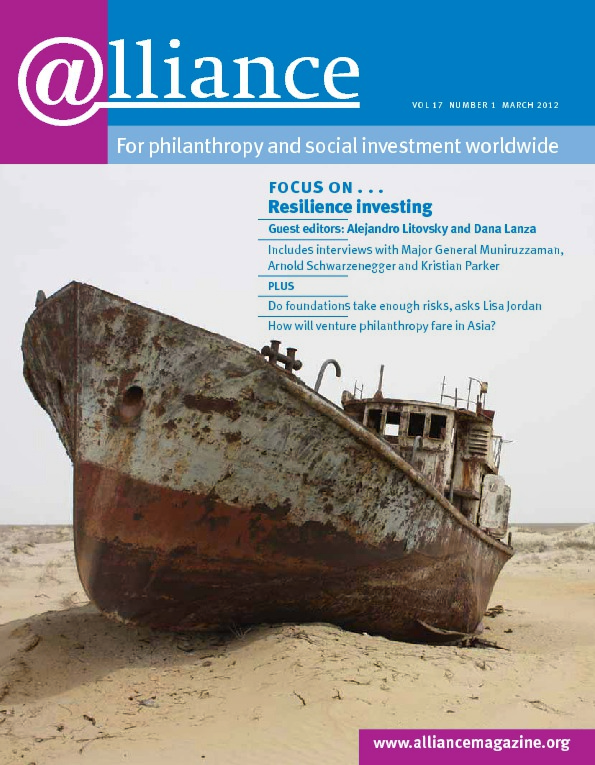 Lucy Bernholz has written an interesting industry forecast for the philanthropic sector for 2012. As in previous years, Blueprint 2012 aims to give those involved and potentially involved in the sector a view of the themes that may be important this year. The overall document of approximately 40 pages contains a number of interesting annually recurring items like the predictions and wildcards for the new year and the review of the previous forecasts in the light of the actual events of the past year.
Lucy Bernholz has written an interesting industry forecast for the philanthropic sector for 2012. As in previous years, Blueprint 2012 aims to give those involved and potentially involved in the sector a view of the themes that may be important this year. The overall document of approximately 40 pages contains a number of interesting annually recurring items like the predictions and wildcards for the new year and the review of the previous forecasts in the light of the actual events of the past year.
Although the work is thought-provoking and insightful on trends in the sector, I am not sure whether the material’s presentation in book form – rather than just through Bernholz’s excellent blog http://www.philanthropy2173.com – is justified. The different sections are of unequal length and depth and do not add up to a coherently structured book.
Blueprint 2012 starts off by introducing a (new) term, ‘social economy’. Without giving a strict definition, the social economy is taken to mean the use of private resources for public goods. However, confusion arises when the author suggests that public resources can also support the social economy and when a lighthouse is put forward as a typical example of a public good. The implication is that everything that is for the public good is included in the term, a vastness of scale which the author, possibly unintentionally, confirms when she goes on to describe the social economy as something that contains different galaxies (of non-profits, impact investing and political giving). Besides, the shift that Bernholz sees for 2012 – from philanthropic and non-profit to the social economy – seems to be one of definition rather than of interest. Everything that was there in 2011 will also be present in 2012.
In a more interesting but mainly American context, Bernholz draws our attention to the impact that the Citizens United Supreme Court ruling of January 2010 will have on the 2012 election year in the USA. This widely criticized ruling is a major change to the political funding system, which will most probably influence not only the elections but also some of the related non-profits and the stream of donations in this year.
The last major shift the author predicts is the growing importance of data for the sector and the way we operate as a whole. This is an interesting observation which indeed holds true for a number of areas related to philanthropy. Data can be useful to organize and improve non-profit work and is essential for reporting and evaluating organizations within the sector. Also, the (US) government is opening up more and making government data available, leading to an upsurge of volunteers helping to put this data to use.
In all, this short book offers some interesting insights into present and possible future issues that the philanthropic sector will be faced with this year and beyond. For it to become an authoritative annual industry forecast, I think the author should choose to expand future editions and make Blueprint into an even more coherent and informative whole. Lucy Bernholz is very knowledgeable on present-day philanthropy and her insights are a useful and valuable addition to the (US) sector. Her Blueprints deserve a structure that offers a detailed connection of the long-term trends affecting the sector with the short-term forecasts for the next year.
Charles Erkelens is director of the Erasmus Centre for Strategic Philanthropy at Erasmus University Rotterdam. Email erkelens@ese.eur.nl
To order
http://www.lulu.com
Blueprint 2012
Lucy Bernholz Lulu Publishing £6.43/$9.95
ISBN 9780984781119





Comments (0)